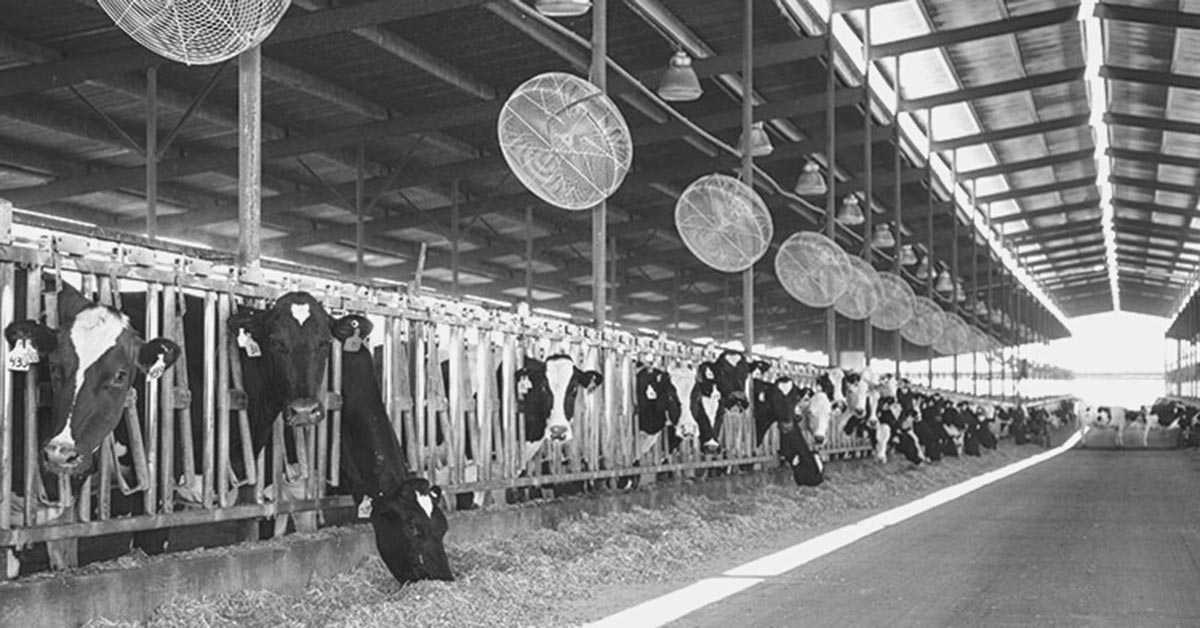
As seasons change and temperatures rise, it is no surprise to dairy farmers that cows may experience heat stress. In the U.S. alone, experts estimate a loss of $5–6 billion a year due to decreased animal performance and lost milk production. Completely eliminating heat stress in dairy cows is unlikely, as they metabolically produce more heat that many other mammals, but what can we do to help minimize these losses in warmer climates?
Dairy cows may begin to experience heat stress when the temperature humidity index reaches 68 degrees or higher. Practical techniques can be implemented in order to help minimize or relieve the stress of heat and humidity on the animal. These heat abatement techniques include providing shade, air (or ventilation) and water. Minimizing exposure to direct sunlight, increased fan usage and supplying ample amounts of fresh, clean water are examples of basic but important heat abatement techniques.
Additionally, some other management practices can also be implemented. Supplemental cooling measures, such as sprinkler systems, provide additional relief to the cow. Stocking density in free stalls or pens is another important factor to consider. In instances of increased numbers of animals or any over-crowding, there is a decrease in watering trough space, feed bunk space and stalls to lay in — all of which are critical when trying to maintain milk production.
Feed management is also an important area of focus. As heat stress increases, a cow’s dry matter intake tends to decrease. Slowly shifting feeding times throughout the day to avoid feeding while temperatures are highest can help minimize the loss of dry matter intake. The amount of feed delivered or the number of times we feed and push up feed can also be altered in order to decrease spoilage. Within the ration, proper nutrient management should be implemented after consulting with your nutritionist, as essential nutrients are still required despite the decrease in overall dry matter intake.
Practicing these management techniques can help minimize heat stress on all lactating and non-lactating Feed management is also an important area of focus. As heat stress increases, a cow’s dry matter intake tends to decrease. Slowly shifting feeding times throughout the day to avoid feeding while temperatures are highest can help minimize the loss of dry matter intake. The amount of feed delivered or the number of times we feed and push up feed can also be altered in order to decrease spoilage. Within the ration, proper nutrient management should be implemented after consulting with your nutritionist, as essential nutrients are still required despite the decrease in overall dry matter intake.animals. Dry cows, calves and heifers also require heat stress abatement management. Lowering the harmful effects of heat stress will help to maintain reproduction, milk and component production and lessen the impact of economic loss on your dairy farm.
- Log in to post comments
